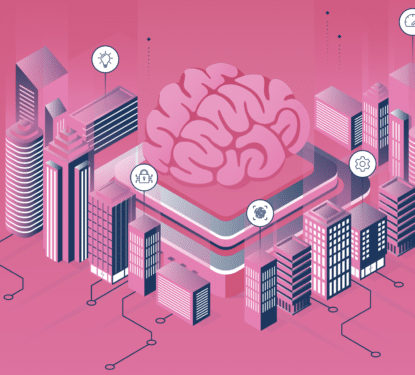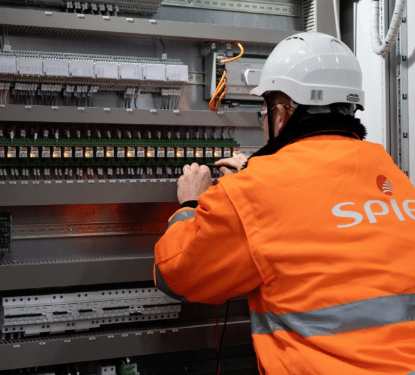After a hectic day you finally arrive at the hospital to visit your nephew, Billy, who’s recovering from a broken arm after a skateboarding accident. Out of breath and a bit flustered you approach the reception where the desk bot says “Hello Mr. Smith, the Doctor is in with Billy at the moment so you have five minutes. Why not get a drink and catch your breath?” You agree and directions to the cafeteria are sent to your mobile device. “Welcome to the AI hospital,” it says as you walk away...
Artificial intelligence (AI) is set to become an integral part of our society, not least in our buildings where we spend most of our urban lives. An AI enabled hospital, like in the example, has multiple ways to recognize you on arrival; the information provided by your smartphone, facial recognition from your last visit, even recognizing your unique walking gait. Identification allows verification for access control, if you’re on the approved visitors list you’d never know your access is being controlled. Equally, if you’re on the banned list security may discreetly be alerted.
Arriving at the cafeteria the bot offers you a pineapple juice, remembering that was your choice last time you visited at 6pm on a hot day like today. Having already had a pineapple juice that afternoon, you ask for water, which the bot provides while remembering the circumstances around your choice for next time. ‘Realizing’ you arrived to the hospital empty handed; the bot asks “would you like to visit the gift shop before going to see Billy?” You Agree and walk out of the cafeteria, payment is automatic.
“Context, content, collaboration, and channels come together to all AI-driven services to deliver immersive and unique experiences to each individual,” explains R “Ray” Wang, principal analyst, founder, and chairman of Silicon Valley based Constellation Research.
AI systems combine data from a variety of streams, such as weather, time and purchase history, to make recommendations. Accepting the bots suggestion will reinforce this recommendation, making another choice will allow the AI system to learn.

Following directions sent to your device, you arrive at the gift shop thinking ‘Billy is 11, he probably wants candy.’ The bot, however, offers you a card, a stuffed animal toy and a crossword book. You see a clerk, wondering why candy was not on the list and he tells you Billy is allergic to nuts and advises against sugar considering his medication. Annoyed that the bot knows your nephew better than you, you decide to look at the toy section and pick out a skateboarding penguin. “Might this be in bad taste considering Billy was injured skateboarding?” the bot asks on your way out, you pause, then decide it’s funny and continue to the elevator.
The AI system may have access to medical information or even know what gifts a patient has received from other visitors, but it will take time to understand your ironic sense of humor. With time however, AI systems can learn even the quirkiest human behaviors, although it may still highlight this nonconformity for your consideration.
“Anticipatory analytics, catalysts, and choices interact to power mass personalization at scale,” explains Wang in an article for Enterprise Irregulars, “the AI systems offer statistically driven choices to incite action.”
Skateboarding penguin in hand, you are given the fastest route to Billy’s room. On the way you are reminded that visiting time ends in an hour and to be careful with Billy’s fragile left arm. You enter the room, Billy delighted with his ironic gift despite odd looks from the doctor and nurse. 10 minutes before visiting time is over the AI system gives you a quick reminder, so you can give Billy a proper goodbye, then reminds you where you parked and seeing your route home is over an hour it highlights the toilets on your way out.
AI systems are designed to augment human intelligence not replace it, artificial intelligence is there to allow systems to understand and support our lives. “By enabling reduction of errors, improving speed of decisions, identifying demand signals, predicting outcomes, and preventing disasters, AI driven smart services play a key role in defining business models for block chain technologies, IoT, customer experience, and future of work,” Wang sets out.
AI systems like these are not visions of the future, they are a near-term reality in hospitals, offices, shopping malls and all manner of urban environments. For those readers who perceive this type of AI support as annoying, don’t worry, given enough information the AI will learn to be less annoying.
[contact-form-7 id="3204" title="memoori-newsletter"]



